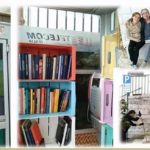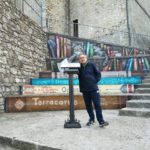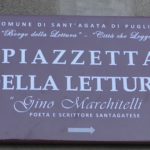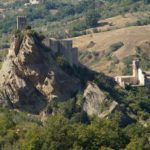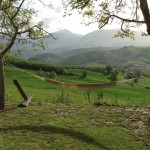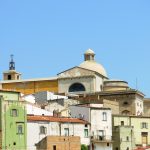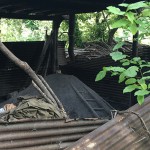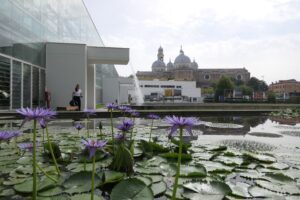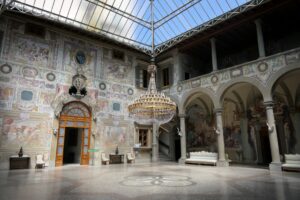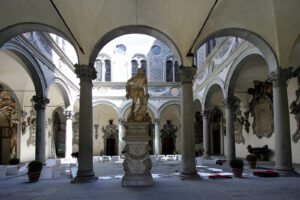Between the Night of the Faugni, (living) legends and reading's village
“Reading Villages” on the Dauni Mountains, Apulia
Reading places, “bibliocabine”, bubble rooms and tree houses
Named the “Loggia delle Puglie” or the “Spione delle Puglie”, Sant’Agata enjoys an excellent panorama that stretches from the mountains of the Vulture up to the Gargano and the Adriatic Sea. The urban layout of the town preserves the medieval structure; it developed in a spiral form starting from the castle towards the valley in a progression of alleys, steep stairways, arches, turrets, bell towers, houses with characteristic portals. But Sant’Agata di Puglia has long been famous for its reading village. In addition to the beautiful library, for some years now, in the central place of the town, an old telephone booth has been transformed into a practical and innovative “Bibliocabina” (i.e. library phone box) where you can pick up or deposit books freely.
- Sant’Agata di Puglia
- Sant’Agata di Puglia
- Sant’Agata di Puglia
In a corner of the historic center there is a place of reading dedicated to Gino Marchitelli, writer and local poet. A place where the color of artistic beauty is combined with the warmth of hospitality. A place where you can enjoy the joy of getting lost, or who knows, maybe even finding yourself among the pages of a good book. It is characterized by the presence of a lectern, facing a staircase of steps, brightened and colored by different murals, obviously focused on the theme of “reading”. After the lecture of a good book, at sunset it is right to visit the castle. Located in the highest part of the village, the imperial castle is one of the jewels of Sant’Agata di Puglia. Initially used for military control of the territory, it still retains the signs of the various dominations. From the Byzantines to the Lombards and then passed under the control of the Normans in the 11th century. It was under Alfonso of Aragon that the castle underwent the first changes, turning it into a ducal residence. Of great interest is the chapel dedicated to Sant’Agata, commissioned by Carlo I d’Angiò and the walk between the towers, from which you can enjoy an exceptional point of view.
Road to Biccari
At an hour’s drive there is the possibility of visiting another reading village of Puglia Region: Biccari. This is a small town in the province of Foggia. The data on prehistory are very scarce, but in the territory of Biccari the highest Neolithic settlement in Puglia was discovered, at over 700 mt of altitude in the locality of Boschetto, along the bank of the Organo stream, a few km from the current center. The origins of the current center of Biccari are certainly to be placed between 1024 and 1054 by the Byzantines of the Catepano Basilio Bojannes (Bogiano) and the Vicar of Troy, Bisanzio de Alferana. Testimony of the time is the mighty cylindrical tower, part of a series of military outposts designed to better defend the Via Traiana, an important traffic artery connecting the Irpina area and the Tavoliere.
- Biccari, Tree House
- Biccari, Tree House
- Biccari, Bubble Room
The byzantine tower, the mighty cylindrical tower, dominating the town in the course of the years has not undergone alterations or restructuring of relief and presents itself today in his capacity as original: 23 mt high, rises on a slow slope, likewise cylindrical boundary to the supreme from a thin annulus. Has an outer diameter of about 13 mt. Sleeping in the middle of nature under a magnificent starry sky, is it your dream? Starting from this summer it will become reality: on Monte Cornacchia, near the lake Pescara, in the village of Biccari, have been installed the Bubble Room, inflatable bubbles with beds, tables and chairs inside. Bu it’s not over. Is possible to buy the house at 1 euro or live a fantastic experience of sleeping in a wooden house on a tree surrounded by woods. A suitable place for those who love nature and intend to spend a few days relaxing in an uncontaminated environment.
Roberto Colella
“Borghi della lettura” (i.e. reading villages) is a network counting more than 50 Italian historical villages engaged in the promotion of literature and reading, enhancing the places through cultural events to book and stories lovers.
Cover pic courtesy of Flickr User Gianfranco Vitolo

